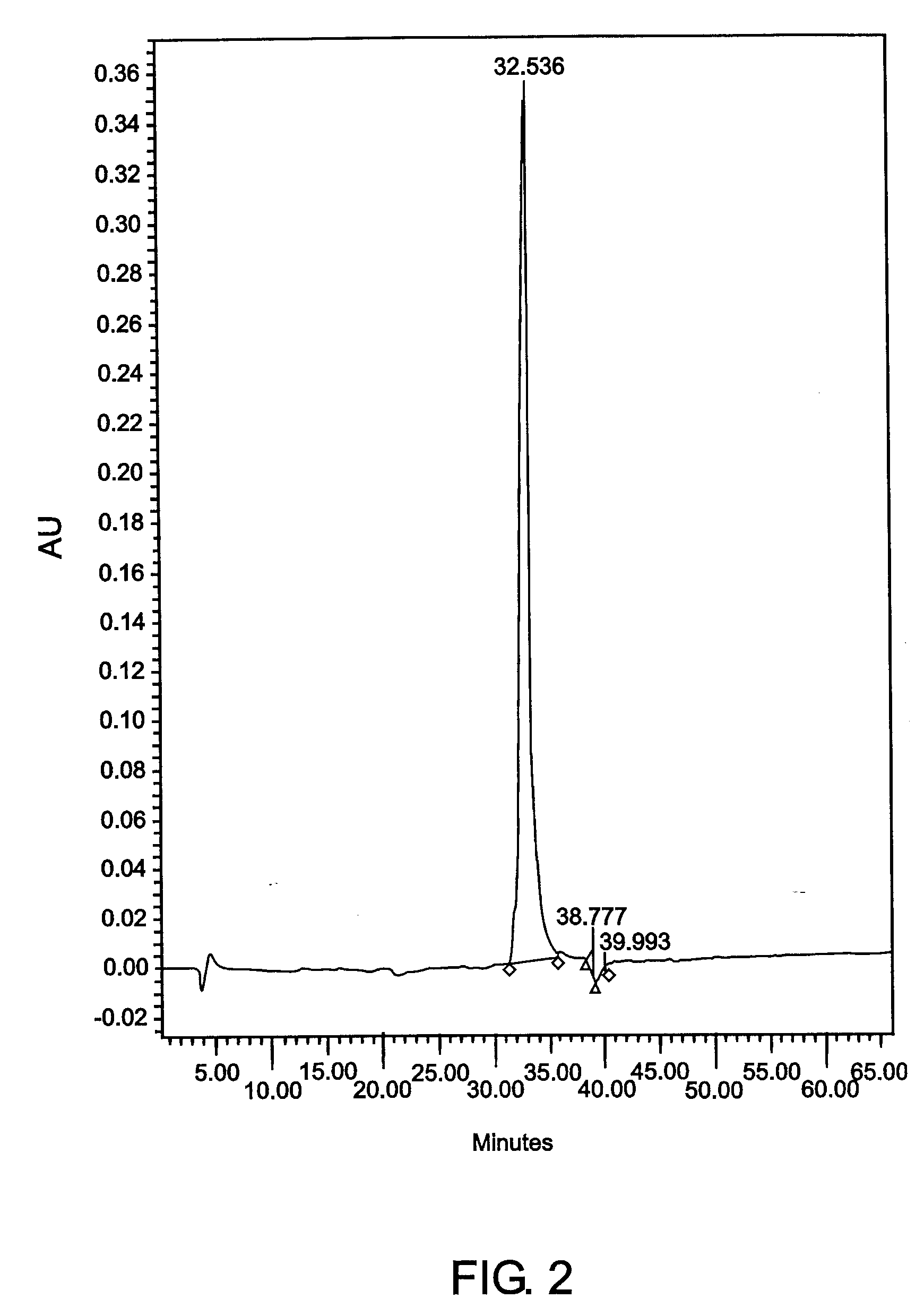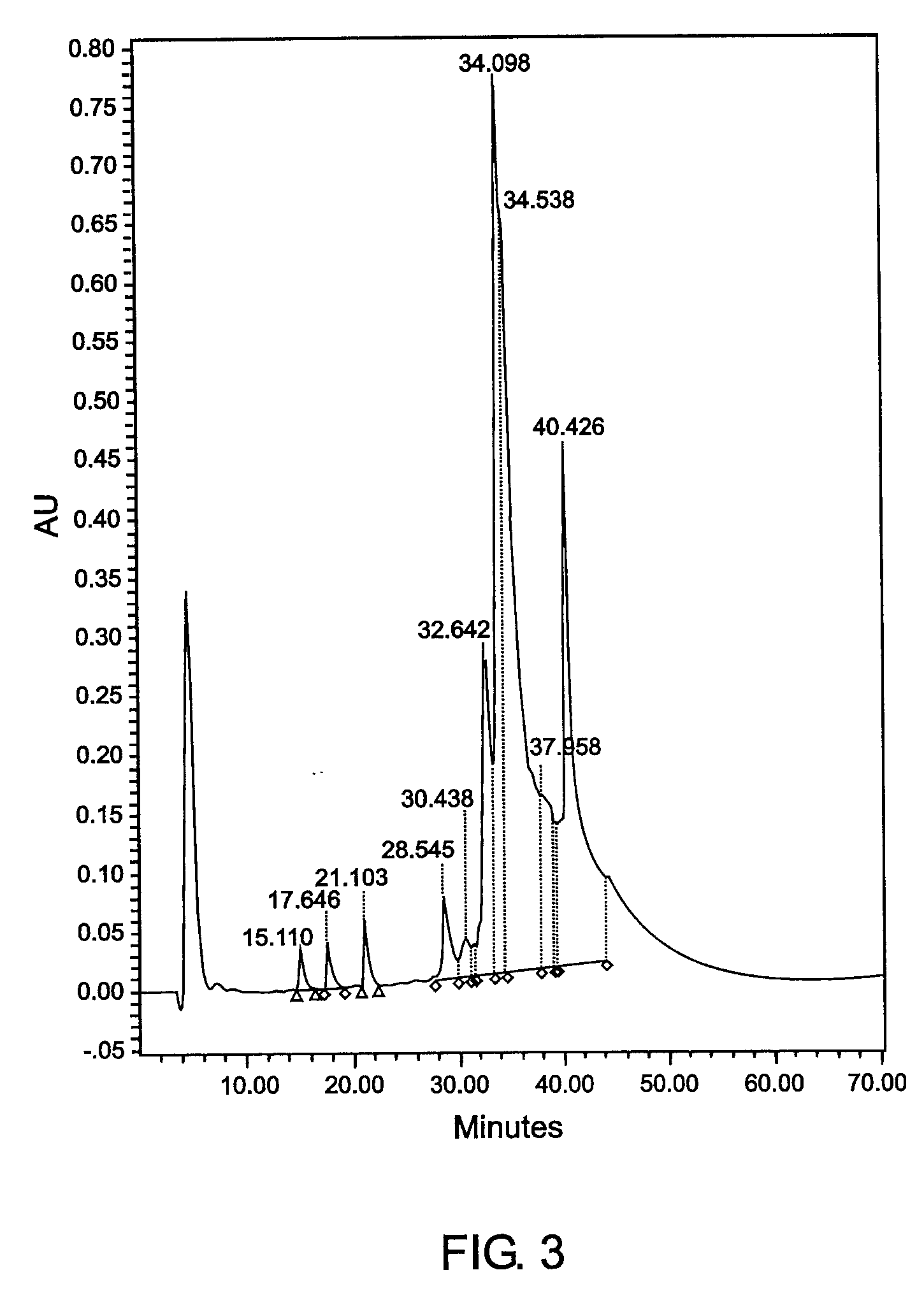Methods for Purifying Selected CEA Family Member Proteins
- Summary
- Abstract
- Description
- Claims
- Application Information
AI Technical Summary
Benefits of technology
Problems solved by technology
Method used
Image
Examples
example 3cea
[0140] Example 3CEA Purification from TriChem Resources Partially Purified CEAPartially purified CEA, product # 10695B (lot # 01H0801FP) was received from TriChem Resources. The sample was centrifuged, concentrated using a 30kDa hollow fiber cartridge, and injected onto the Superdex 200 SEC column. The fractions coming off the column were pooled, labeled A-G and assayed. The purity of the CEA did not meet requirements, therefore the B fraction was concentrated a second time and reprocessed by injecting it onto the SEC column again, to achieve a higher purity CEA. The sample still did not meet percent purity standards. All of the CEA that was eluted from the two SEC runs was pooled and injected onto the a CIX (Fractogel EM SO.sub.3 EMD SO.sub.3-650 M, product No. 16882-1, CIX from EM Science, Gibbstown, New Jersey) containing CEC column. Fractions 8 and 9 were pooled to obtain 100% of the CEA injected onto the column. The purity was determined to be 100% by reverse phase HPLC. Contam...
PUM
| Property | Measurement | Unit |
|---|---|---|
| Fraction | aaaaa | aaaaa |
| Fraction | aaaaa | aaaaa |
| Fraction | aaaaa | aaaaa |
Abstract
Description
Claims
Application Information
 Login to View More
Login to View More - R&D
- Intellectual Property
- Life Sciences
- Materials
- Tech Scout
- Unparalleled Data Quality
- Higher Quality Content
- 60% Fewer Hallucinations
Browse by: Latest US Patents, China's latest patents, Technical Efficacy Thesaurus, Application Domain, Technology Topic, Popular Technical Reports.
© 2025 PatSnap. All rights reserved.Legal|Privacy policy|Modern Slavery Act Transparency Statement|Sitemap|About US| Contact US: help@patsnap.com



